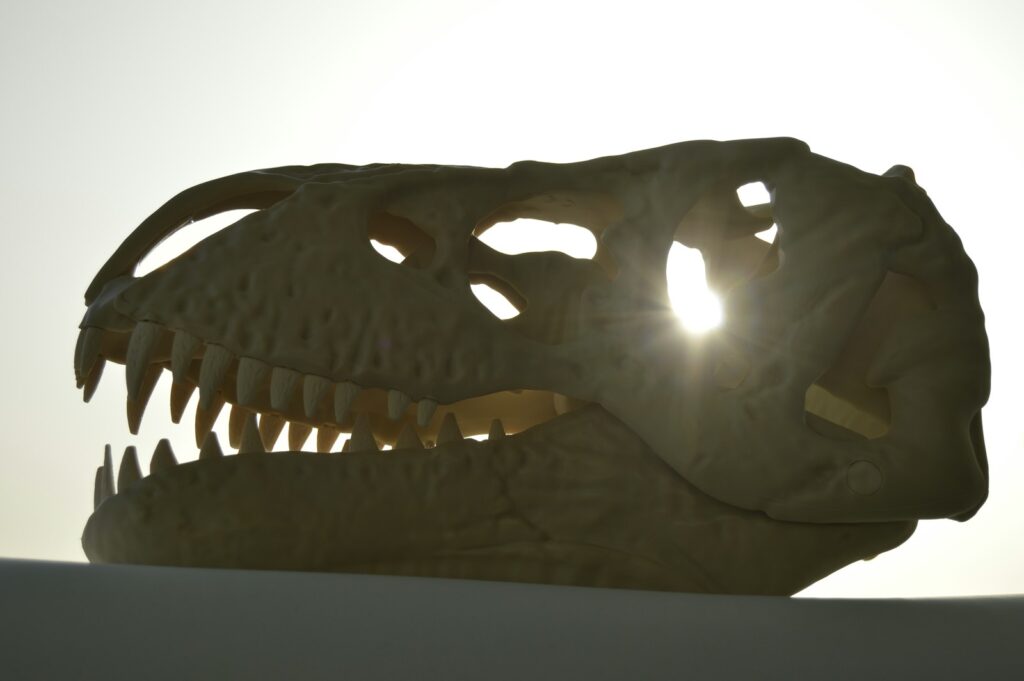The Late Cretaceous period, roughly 70 million years ago, was home to some of Earth’s most fascinating dinosaurs. Among them was Mononykus, a small but remarkable creature that roamed the ancient Mongolian desert. This peculiar dinosaur, with its single-clawed forelimbs and bird-like features, represents one of evolution’s most fascinating experiments. Though diminutive compared to its famous cousins like Tyrannosaurus rex, Mononykus tells an important story about dinosaur diversity and the evolutionary path toward modern birds. This unusual theropod, whose name means “one claw,” has captivated paleontologists since its discovery in the early 1990s, offering valuable insights into the complex tapestry of dinosaur evolution during the twilight of their reign.
Discovery and Naming of Mononykus

Mononykus was first discovered during a joint Mongolian-American expedition to the Gobi Desert in 1993, specifically in the Nemegt Formation of Mongolia. The scientific name Mononykus olecranus translates to “one claw” and refers to the dinosaur’s most distinctive feature: its single, large claw on each forelimb. Paleontologist Perle Altangerel, along with American colleagues, formally described this unusual dinosaur, immediately recognizing its scientific significance. The holotype specimen, consisting of a relatively complete skeleton, provided scientists with enough material to understand its basic anatomy and evolutionary relationships. Initially classified under a different name, further study revealed its unique characteristics warranted its own genus, thus establishing Mononykus as a distinct and fascinating member of the dinosaur family tree.
Physical Characteristics and Size
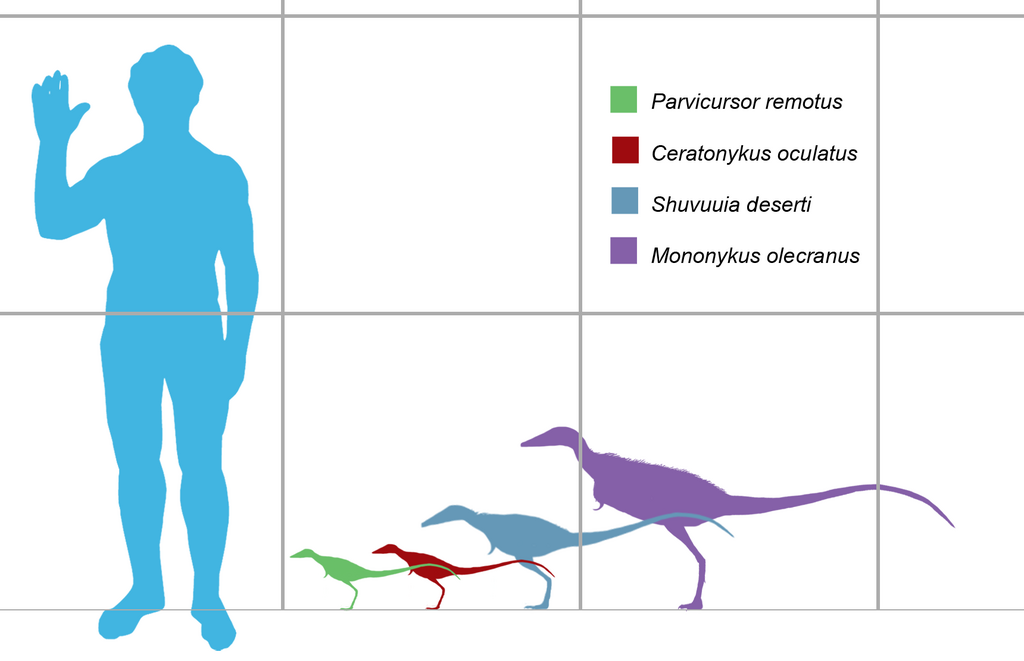
Mononykus was a small dinosaur by any standard, measuring approximately 1 meter (3 feet) in length and weighing only about 3-5 kilograms (7-11 pounds) – roughly the size of a modern pheasant. Its body was streamlined and likely covered in feathers, though direct evidence of feathering is not preserved in the known fossils. The creature had long, slender hind limbs built for running across the desert terrain, supported by a rigid tail that helped with balance. Its skull was small and lightly built, with a narrow snout and small, sharp teeth perfect for catching insects. Perhaps most notable was its bizarrely reduced forelimbs, each sporting a single, large claw at the end of a short, powerful arm. These arms, though tiny in proportion to its body, were robustly constructed, suggesting they served an important functional purpose rather than being vestigial structures.
Evolutionary Position: Between Dinosaur and Bird

Mononykus occupies a fascinating position in the dinosaur family tree, belonging to a group called alvarezsaurids, which in turn falls within the larger maniraptoran theropod dinosaurs. These maniraptoran dinosaurs are the group from which modern birds evolved, making Mononykus a distant relative of today’s avian species. The creature shows a mixture of distinctly dinosaurian traits and more bird-like features, representing what scientists call a mosaic evolution pattern. Its breastbone, pelvis, and skull show several bird-like characteristics, while its limb proportions and claw structures remain distinctly dinosaurian. This combination of features has made Mononykus an important specimen for understanding the complex evolutionary transitions that occurred as some dinosaur lineages evolved toward increasingly bird-like forms. While not a direct ancestor of birds, it represents a fascinating parallel experiment in dinosaur evolution.
The Single-Clawed Mystery: Understanding Unusual Forelimbs
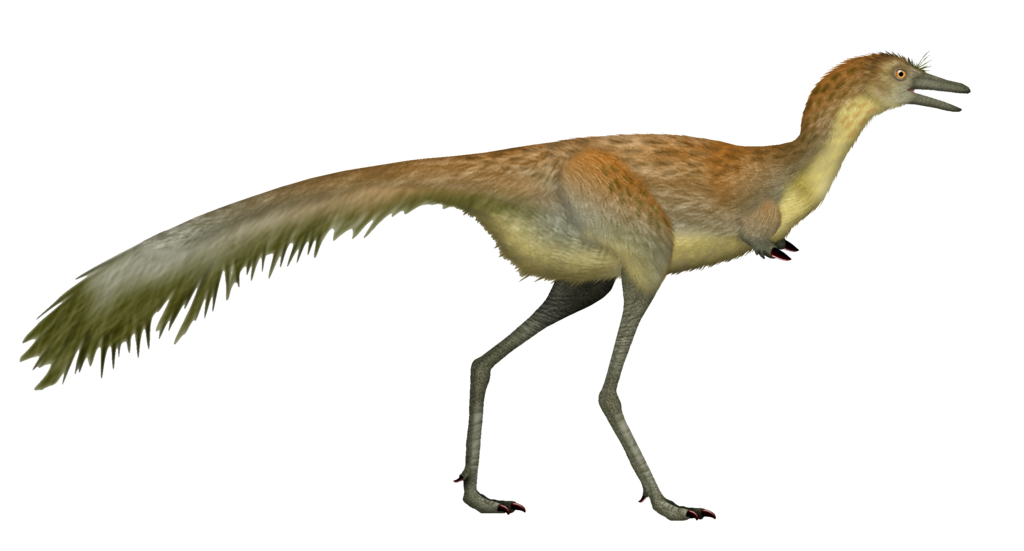
The most striking feature of Mononykus – its single-clawed, diminutive forelimbs – has been the subject of intense scientific debate since its discovery. These arms were remarkably short, measuring only about 15 centimeters (6 inches) in length, but possessed surprising strength given their size. Each arm ended in a single, enlarged claw that was likely covered in a keratin sheath during life, making it even larger and more robust than the fossil evidence alone suggests. The shoulder joint of Mononykus was also unusual, restricting movement largely to a back-and-forth motion rather than the more flexible range typical of other theropods. This specialized limb structure has no exact modern parallel, making functional interpretations challenging for paleontologists. The arms show adaptations for strength rather than reach, suggesting they were used for powerful, focused actions rather than grasping or manipulating objects in a general way.
Diet and Feeding Behavior

Paleontologists believe Mononykus was primarily insectivorous, specializing in termites and other social insects that would have been abundant in the Late Cretaceous landscapes of Mongolia. Its narrow snout and small, numerous teeth appear well-adapted for catching and consuming small prey rather than tearing larger animals. The specialized forelimbs likely played a crucial role in its feeding strategy, possibly being used to break into termite mounds or dig into rotting wood to access insect colonies. Some researchers have compared Mononykus to modern anteaters or woodpeckers, suggesting it may have used its powerful single claw to tear open insect nests and then used its long, narrow snout to extract the insects. Analysis of the skull indicates Mononykus may have had a long, sticky tongue similar to modern insect-eating animals, though soft tissues rarely preserve in the fossil record. This specialized diet would have placed Mononykus in a distinct ecological niche, allowing it to exploit food resources unavailable to larger predatory dinosaurs.
Habitat and Environment in Late Cretaceous Mongolia
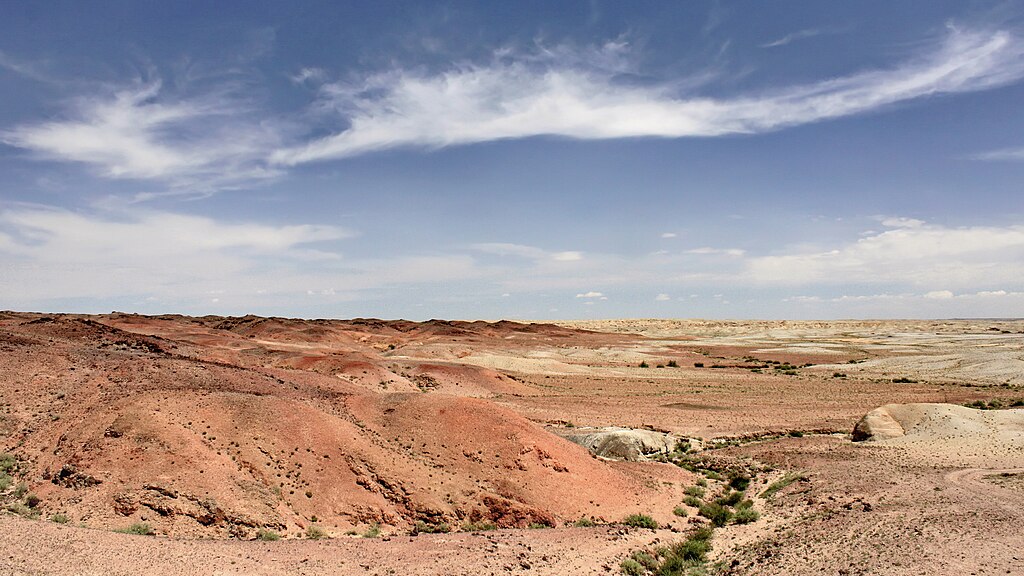
During the Late Cretaceous period when Mononykus lived, approximately 70 million years ago, the Gobi region of Mongolia was quite different from the harsh desert we see today. Paleoenvironmental evidence suggests the area experienced seasonal rainfall patterns creating a semi-arid landscape dotted with streams and oases. The ecosystem supported a variety of plant life including conifers, ginkgoes, and early flowering plants, creating patchy woodlands rather than barren dunes. This environment hosted a diverse dinosaur community including the famous Velociraptor, the dome-headed Pachycephalosaurus, and the herbivorous Saurolophus. Seasonal flooding likely created lush periods of growth followed by drier times, requiring inhabitants to adapt to changing conditions. For a small insectivore like Mononykus, this environment would have provided ample hunting opportunities as insects thrived in the periodic blooms of vegetation and accumulated in the decaying plant matter during drier seasons.
Locomotion and Movement Patterns

Mononykus possessed long, slender hindlimbs that clearly identify it as a swift runner, well-adapted to traversing the open landscapes of its Mongolian home. Analysis of its leg bones indicates it was likely among the fastest of the small dinosaurs, capable of reaching considerable speeds when fleeing predators or pursuing insect prey. Its foot structure, with three forward-facing toes, was similar to modern running birds like ostriches, providing both speed and stability on uneven terrain. The rigid tail of Mononykus served as a counterbalance during rapid movements and quick directional changes, much like the tail of a modern roadrunner. Interestingly, the reduced forelimbs would have shifted the dinosaur’s center of gravity toward its powerful hindlimbs, potentially enhancing its running efficiency. Paleontologists believe Mononykus moved with a distinctly bird-like gait, holding its body in a horizontal position with its head forward and tail extended behind for balance, representing an excellent example of convergent evolution with modern cursorial birds.
Social Behavior and Life History

While direct evidence of Mononykus social behavior is limited by the fossil record, paleontologists can make educated inferences based on related species and ecological considerations. Given its small size and specialized feeding habits, Mononykus likely lived either solitarily or in small groups, rather than large herds typical of some herbivorous dinosaurs. As an insectivore dependent on scattered food resources, territorial behavior would have been advantageous, with individuals potentially defending productive feeding areas. Growth ring analysis of bones from related alvarezsaurids suggests these dinosaurs grew relatively quickly to adult size, reaching sexual maturity within a few years. This rapid growth strategy would have been advantageous in an environment with seasonal stresses and predation pressure. Like modern birds, Mononykus likely reproduced by laying eggs, though no definitive Mononykus nests or eggs have been discovered to date, leaving aspects of its reproductive biology speculative but informed by its evolutionary relationships.
Predators and Survival Strategies

The Late Cretaceous Mongolian ecosystem teemed with predators that would have viewed a small dinosaur like Mononykus as potential prey. Larger theropods such as Velociraptor and Tarbosaurus (an Asian relative of Tyrannosaurus) dominated the predatory niches, forcing smaller species to develop effective survival strategies. Mononykus’s primary defense was undoubtedly its speed and agility, using its powerful legs to outrun threats or dash to cover when detected. Its keen senses, suggested by the brain case anatomy, would have provided early warning of approaching dangers. The coloration of Mononykus, though not preserved in fossils, likely featured camouflage patterns that helped it blend into its surroundings, similar to modern desert-dwelling birds. Additionally, its small size would have allowed it to utilize burrows or dense vegetation as refuge from larger predators unable to follow into confined spaces. These combined adaptations would have given Mononykus a fighting chance in an ecosystem filled with formidable hunters.
Scientific Controversies and Competing Theories

Since its discovery, Mononykus has been the subject of several scientific debates within paleontological circles. Initially, some researchers questioned whether it should be classified as a bird rather than a non-avian dinosaur, given its numerous bird-like features. This classification controversy has largely been resolved as scientists now recognize it as a specialized theropod dinosaur within the alvarezsaurid family, related to but distinct from true birds. More persistent is the debate surrounding the function of its unusual forelimbs, with competing theories ranging from termite nest excavation to specialized defense mechanisms. Some paleontologists have even proposed the surprising hypothesis that the arms might have been used for digging burrows or climbing, though the consensus has gradually shifted toward insect foraging as the primary function. Another area of contention involves the extent of feathering in Mononykus, with some researchers arguing for complete feather coverage similar to modern birds, while others suggest more limited plumage concentrated on specific body regions.
Related Species and the Alvarezsaurid Family
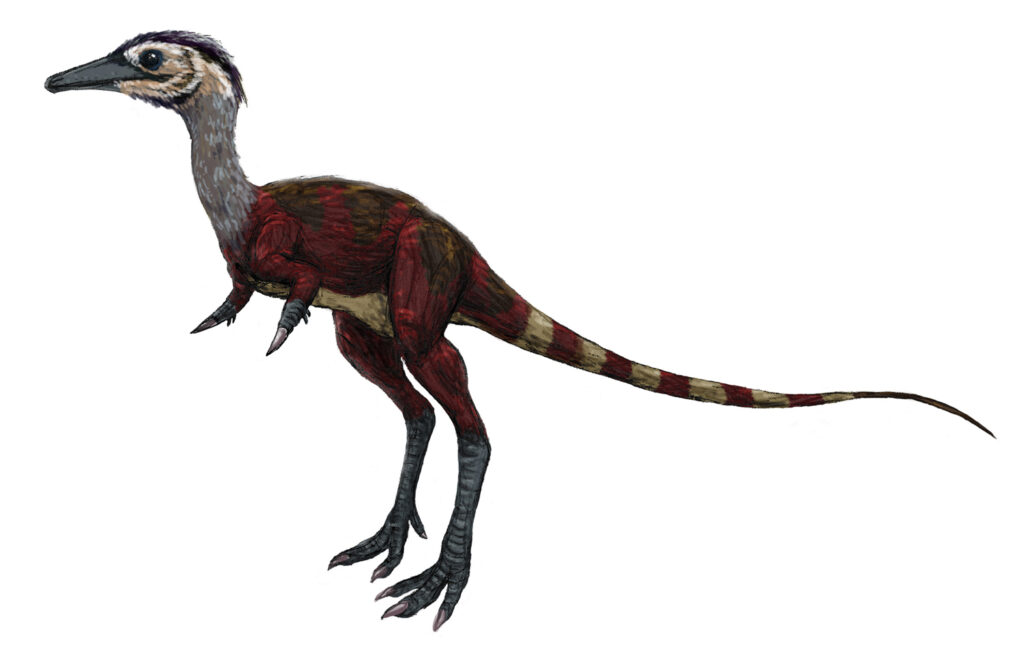
Mononykus belongs to the alvarezsaurid family, a group of small, specialized theropod dinosaurs that ranged across several continents during the Late Cretaceous period. Close relatives include Shuvuuia from Mongolia, which preserves evidence of feathers and adaptations for nocturnal vision, and Alvarezsaurus from Argentina, which gives the family its name. These related species share the characteristic reduced forelimbs, though with variations in the number and size of digits, suggesting evolutionary experimentation with this unusual limb configuration. The alvarezsaurid family shows remarkable evolutionary trends including progressive reduction of forelimb digits, increased body miniaturization, and adaptation to insectivorous diets across their approximately 30-million-year history. Geographic distribution of alvarezsaurid fossils across Asia and South America indicates these dinosaurs were surprisingly widespread, successfully adapting to various environments while maintaining their specialized feeding adaptations. Recent discoveries continue to expand our understanding of this family, with new species being described from China, Mongolia, and North America, filling in gaps in their evolutionary history.
Modern Scientific Research Techniques

Contemporary paleontologists studying Mononykus employ sophisticated technologies that would have seemed like science fiction when the dinosaur was first discovered. CT scanning allows researchers to examine the internal structure of fossil bones without damaging specimens, revealing details about brain case anatomy, inner ear structure, and even blood vessel pathways. Biomechanical analysis using computer modeling helps scientists understand how Mononykus moved and how much force its unusual forelimbs could generate, providing insights into potential behaviors. Geochemical analysis of the rocks surrounding Mononykus fossils yields information about the ancient climate and environment, contextualizing how this dinosaur lived within its ecosystem. Comparative studies with modern birds and reptiles provide crucial reference points for interpreting the anatomical features of Mononykus, particularly regarding soft tissues that rarely preserve in the fossil record. Additionally, advances in phylogenetic analysis techniques have helped clarify Mononykus’s position in the dinosaur family tree, resolving earlier controversies about its relationship to birds and other theropods.
Cultural Impact and Representation

Despite its relatively recent discovery, Mononykus has secured a place in popular culture as one of the more distinctive and unusual dinosaurs known to science. The dinosaur has been featured in several documentary series including BBC’s “Planet Dinosaur” and PBS’s “Nova,” typically highlighted for its strange proportions and specialized lifestyle. Museum exhibitions around the world now regularly include Mononykus reconstructions, often depicted with a full covering of feathers based on evidence from related species. Paleoartists have embraced the challenge of bringing this unusual creature to life, creating diverse interpretations that have evolved as scientific understanding has advanced. In children’s educational materials, Mononykus frequently serves as an example of the surprising diversity of dinosaur forms, countering the stereotype that all dinosaurs were gigantic. The dinosaur’s specialized insect-hunting adaptations have made it a popular example in discussions of evolution and ecological specialization, demonstrating how natural selection can produce remarkable anatomical solutions to specific environmental challenges.
Extinction and Legacy

Mononykus, like all non-avian dinosaurs, disappeared during the mass extinction event at the end of the Cretaceous period approximately 66 million years ago. This catastrophic extinction, triggered by an asteroid impact and subsequent environmental changes, eliminated approximately 75% of all species on Earth. Despite its specialized adaptations that had served it well in the Mongolian ecosystem, Mononykus could not survive the global environmental collapse that followed the impact. The alvarezsaurid lineage, having existed for millions of years and spread across multiple continents, came to an abrupt end without leaving direct descendants. Nevertheless, the evolutionary experiments represented by Mononykus contributed to our understanding of the remarkable diversity that dinosaurs achieved before their extinction. The specialized features of this small dinosaur demonstrate the incredible adaptability of theropod dinosaurs, some of which evolved into the birds that survive today as living dinosaur descendants. In this way, while Mononykus itself left no survivors, it represents an important chapter in the evolutionary story that connects the dinosaurs of the past to the birds of our modern world.
The story of Mononykus offers a fascinating glimpse into the diversity of dinosaur life that once inhabited our planet. This small, specialized creature with its single-clawed arms and insect-hunting lifestyle demonstrates that dinosaurs were not merely oversized reptiles but complex animals that evolved remarkable adaptations to fill specific ecological niches. From its discovery in the Gobi Desert to its detailed scientific analysis using cutting-edge technologies, Mononykus continues to captivate both researchers and dinosaur enthusiasts alike. As we piece together more details about this unusual dinosaur, we gain valuable insights into the evolutionary processes that shaped life during the Mesozoic era and the intricate relationships between dinosaurs and their environments. Though extinct for 66 million years, Mononykus lives on through scientific study and cultural representations, reminding us of the wondrous diversity that evolution can produce.


